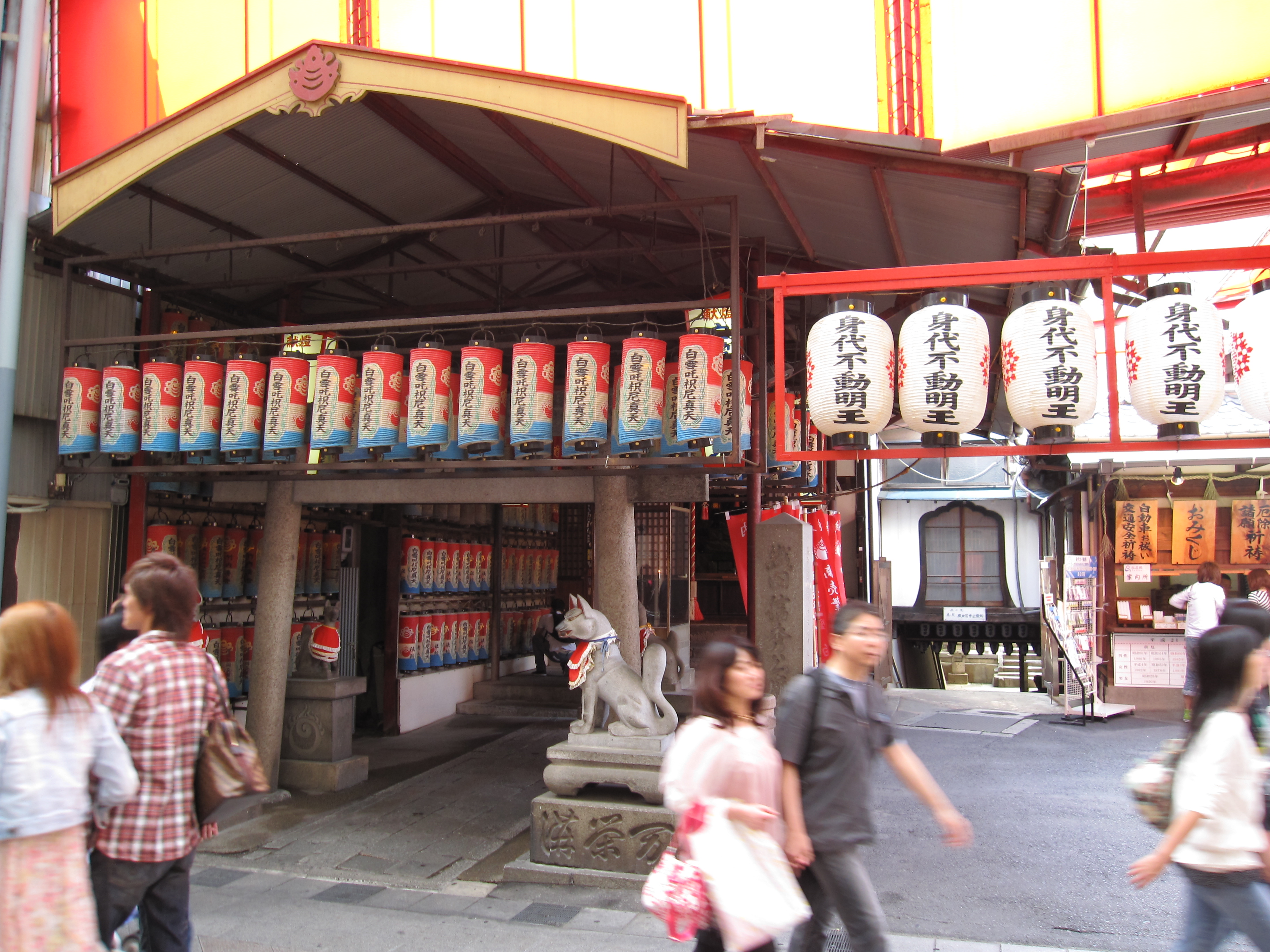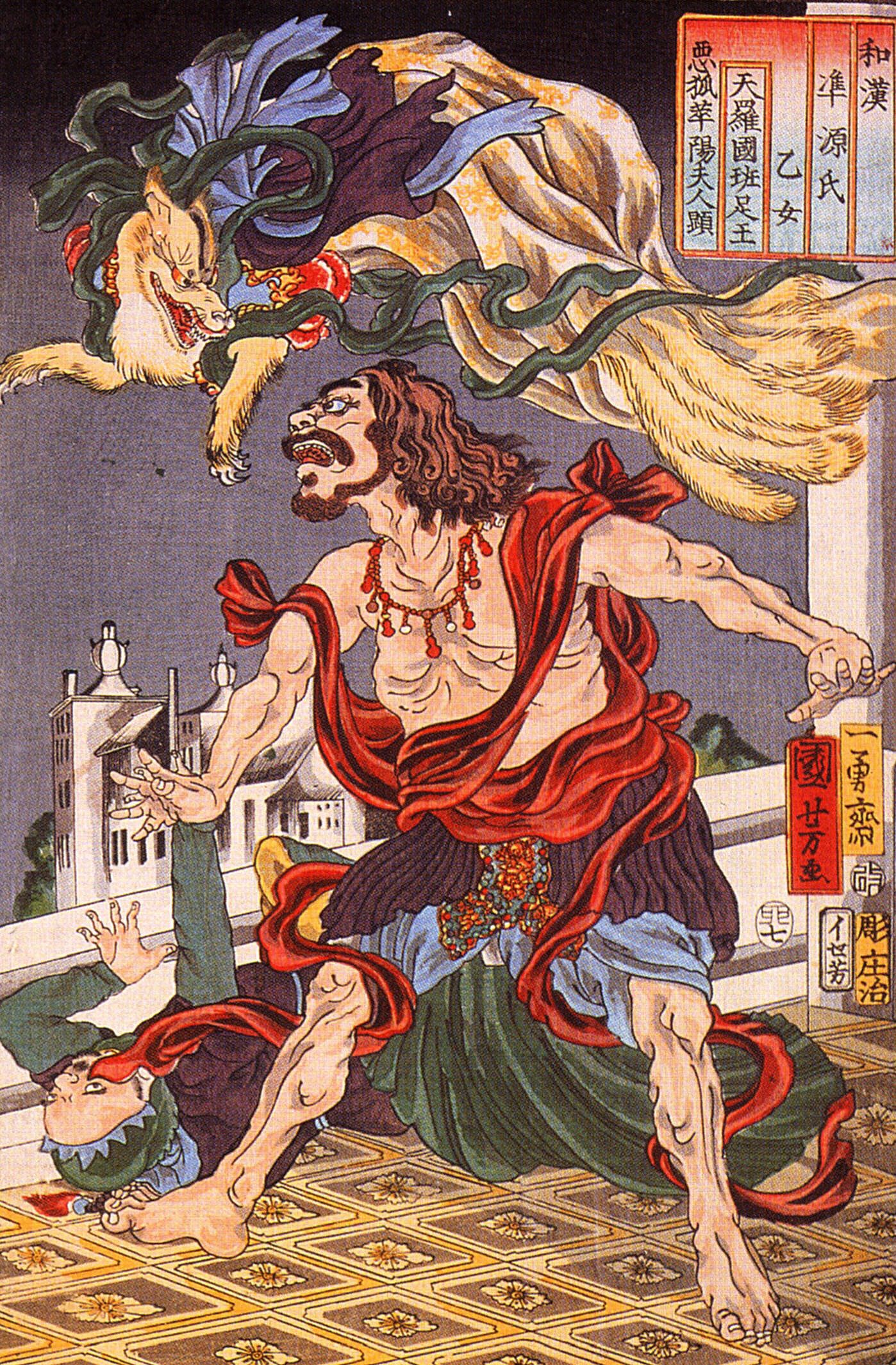|
Banshō-ji
Banshō-ji (万松寺) is a small temple located in Ōsu in central Nagoya, Japan. Lord Oda Nobuhide (1510?-1552) built this Sōtō Buddhist temple in the then village of Nagoya in 1540, and invited the priest Daiun to open it. Katō Kiyomasa (1562–1611) stayed at the temple, which served as his quarters while he was engaged in the construction of Nagoya Castle. The temple was rebuilt in 1610 at its present site. Directly located at the main street is the stone gate. Two ''kitsune In Japanese folklore, , are foxes that possess paranormal abilities that increase as they get older and wiser. According to ''yōkai'' folklore, all foxes have the ability to shapeshift into human form. While some folktales speak of employing t ...'' (fox spirits) guard the entrance. Many paper lanterns give light. External links Homepage of Banshō-ji References Buddhist temples in Nagoya Ōsu 1540 establishments in Japan {{Japan-religious-struct-stub ... [...More Info...] [...Related Items...] OR: [Wikipedia] [Google] [Baidu] |
Nagoya
is the largest city in the Chūbu region, the fourth-most populous city and third most populous urban area in Japan, with a population of 2.3million in 2020. Located on the Pacific coast in central Honshu, it is the capital and the most populous city of Aichi Prefecture, and is one of Japan's major ports along with those of Tokyo, Osaka, Kobe, Yokohama, and Chiba. It is the principal city of the Chūkyō metropolitan area, which is the third-most populous metropolitan area in Japan with a population of 10.11million in 2020. In 1610, the warlord Tokugawa Ieyasu, a retainer of Oda Nobunaga, moved the capital of Owari Province from Kiyosu to Nagoya. This period saw the renovation of Nagoya Castle. The arrival of the 20th century brought a convergence of economic factors that fueled rapid growth in Nagoya, during the Meiji Restoration, and became a major industrial hub for Japan. The traditional manufactures of timepieces, bicycles, and sewing machines were followed by th ... [...More Info...] [...Related Items...] OR: [Wikipedia] [Google] [Baidu] |
Oda Nobuhide
was a Japanese ''daimyō'' and magistrate of the Sengoku period known as "Tiger of Owari" and also the father of Oda Nobunaga the first "Great Unifier" of Japan. Nobuhide was a deputy ''shugo'' (Shugodai) of lower Owari Province and head of the Oda clan which controlled most of Owari. Biography Oda Nobuhide was born in 1510 in Owari Province, the eldest son of Oda Nobusada, the head of the Oda clan and a ''shugodai'' (deputy ''shugo'') of the lower Owari area. Nobuhide became head of the Oda clan when Nobusada died in 1538, and became involved in open warfare as he was confronted to the north by Saitō Dōsan, the ''daimyō'' of Mino Province, and to the east by Imagawa Yoshimoto, the ''daimyō'' of Mikawa, Suruga, and Tōtōmi provinces. In 1540, Nobuhide attacked and took Anjō castle, which was held by the Matsudaira clan. He was assisted by Mizuno Tadamasa, his son, Oda Nobuhiro, was installed as the lord of the castle. In 1542 he defeated Imagawa Yoshimoto at First ... [...More Info...] [...Related Items...] OR: [Wikipedia] [Google] [Baidu] |
Ōsu
is a popular area located in the Naka ward of Nagoya, central Japan. Ōsu is a historic area which has many small shops offering everything from Japanese traditional food to handicrafts. A large department store is OSU301. It is popular amongst fashionable young people as well. The is held every year in October. The highlight is the parade of the ''oiran is a collective term for the highest-ranking courtesans in Japanese history, who were considered to be above common prostitution, prostitutes (known as ) for their more refined entertainment skills and training in the traditional arts. Divided ...''. There are a number of temples and shrines and religious institutions in this area. The most important ones are and and not far away is . Ōsu Kannon Station is located at Ōsu. Ryukasui at Seijuin ''Ryukasui'' was said to be one of three of the highest quality water springs in Owari Province. It was supplied from a well in front of the gate of Seijuin, which was ... [...More Info...] [...Related Items...] OR: [Wikipedia] [Google] [Baidu] |
Sōtō
Sōtō Zen or is the largest of the three traditional sects of Zen in Japanese Buddhism (the others being Rinzai and Ōbaku). It is the Japanese line of the Chinese Cáodòng school, which was founded during the Tang dynasty by Dòngshān Liánjiè. It emphasizes Shikantaza, meditation with no objects, anchors, or content. The meditator strives to be aware of the stream of thoughts, allowing them to arise and pass away without interference. The Japanese brand of the sect was imported in the 13th century by Dōgen Zenji, who studied Cáodòng Buddhism () abroad in China. Dōgen is remembered today as the co-patriarch of Sōtō Zen in Japan along with Keizan Jōkin. With about 14,000 temples, Sōtō is one of the largest Japanese Buddhist organizations. Sōtō Zen is now also popular in the West, and in 1996 priests of the Sōtō Zen tradition formed the Soto Zen Buddhist Association based in North America. History Chinese origins The original Chinese version of Sōtō- ... [...More Info...] [...Related Items...] OR: [Wikipedia] [Google] [Baidu] |
Katō Kiyomasa
was a Japanese ''daimyō'' of the Azuchi–Momoyama and Edo periods. His court title was Higo-no-kami. His name as a child was ''Yashamaru'', and first name was ''Toranosuke''. He was one of Hideyoshi's Seven Spears of Shizugatake. Biography Kiyomasa was born in what is now Nakamura-ku, Nagoya (situated in contemporary Aichi District, Owari Province) to Katō Kiyotada. Kiyotada's wife, Ito, was a cousin of Toyotomi Hideyoshi's mother. Kiyotada died while his son, Kiyomasa (then known as Toranosuke), was still young. Soon after, Toranosuke entered into Hideyoshi's service, and in 1576, at age 15, was granted a stipend of 170 ''koku''. In 1582, he fought in Hideyoshi's army at the Battle of Yamazaki, and later in 1583 at the Battle of Shizugatake. Owing to his achievement in that battle, he became known as one of the Seven Spears of Shizugatake and was rewarded with 3,000 additional ''koku''. In 1584, Kiyomasa took part in the Battle of Komaki and Nagakute against the Tokuga ... [...More Info...] [...Related Items...] OR: [Wikipedia] [Google] [Baidu] |
Nagoya Castle
is a Japanese castle located in Nagoya, Japan. Nagoya Castle was constructed by the Owari Domain in 1612 during the Edo period on the site of an earlier castle of the Oda clan in the Sengoku period. Nagoya Castle was the heart of one of the most important castle towns in Japan, Nagoya-juku, a post station on the Minoji road linking two of the important Edo Five Routes, the Tōkaidō and the Nakasendō. Nagoya Castle became the core of the modern Nagoya and ownership was transferred to the city by the Imperial Household Ministry in 1930. Nagoya Castle was destroyed in 1945 during the bombing of Nagoya in World War II and the reconstruction and repair of the castle has been undergoing since 1957. ''Meijō'' (名城), another shortform way of pronouncing Nagoya Castle (名古屋城), is used for many Nagoya city institutions such as Meijō Park, the Meijō Line of the Nagoya Municipal Subway, and Meijo University, reflecting the cultural influence of this historic structure. ... [...More Info...] [...Related Items...] OR: [Wikipedia] [Google] [Baidu] |
Kitsune
In Japanese folklore, , are foxes that possess paranormal abilities that increase as they get older and wiser. According to ''yōkai'' folklore, all foxes have the ability to shapeshift into human form. While some folktales speak of employing this ability to trick others—as foxes in folklore often do—other stories portray them as faithful guardians, friends, and lovers. Foxes and humans lived close together in ancient Japan; this companionship gave rise to legends about the creatures. have become closely associated with Inari, a Shinto or spirit, and serve as its messengers. This role has reinforced the fox's supernatural significance. The more tails a has—they may have as many as nine—the older, wiser, and more powerful it is. Because of their potential power and influence, some people make sacrifices to them as to a deity. Conversely foxes were often seen as " witch animals", especially during the Edo period (1603–1867), and were thought of as goblins who could ... [...More Info...] [...Related Items...] OR: [Wikipedia] [Google] [Baidu] |
Buddhist Temples In Nagoya
Buddhism ( , ), also known as Buddha Dharma and Dharmavinaya (), is an Indian religion or philosophical tradition based on teachings attributed to the Buddha. It originated in northern India as a -movement in the 5th century BCE, and gradually spread throughout much of Asia via the Silk Road. It is the world's fourth-largest religion, with over 520 million followers (Buddhists) who comprise seven percent of the global population. The Buddha taught the Middle Way, a path of spiritual development that avoids both extreme asceticism and hedonism. It aims at liberation from clinging and craving to things which are impermanent (), incapable of satisfying ('), and without a lasting essence (), ending the cycle of death and rebirth (). A summary of this path is expressed in the Noble Eightfold Path, a training of the mind with observance of Buddhist ethics and meditation. Other widely observed practices include: monasticism; " taking refuge" in the Buddha, the , and the ... [...More Info...] [...Related Items...] OR: [Wikipedia] [Google] [Baidu] |





